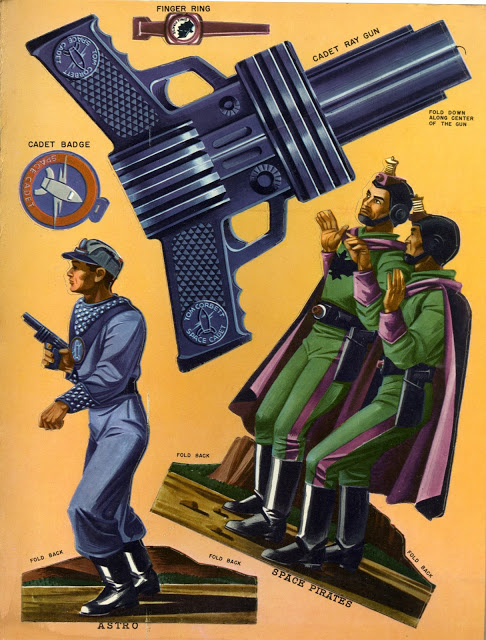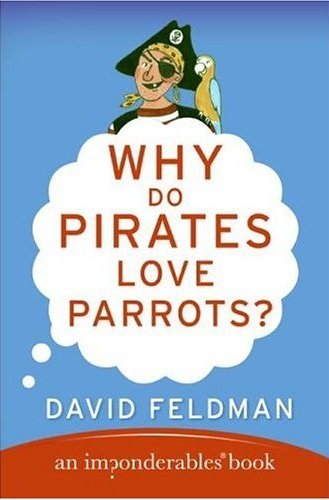(1) IT IS THE END MY FRIEND. My daughter went to the midnight Cursed Child book launch at her local store. She’d keep buying Potter novels if Rowling would keep writing them, but that is not in the works — “J.K. Rowling Says ‘Cursed Child’ Is the Last Harry Potter Story: ‘Harry Is Done Now’”.
The author, 51, spoke at the opening night of the Harry Potter and the Cursed Child stage play in London’s West End theatre district on Saturday, July 30, where she told fans that she’s finished with the series.
“[Harry] goes on a very big journey during these two plays and then, yeah, I think we’re done,” Rowling told Reuters on Saturday night. “This is the next generation, you know. So, I’m thrilled to see it realized so beautifully but, no, Harry is done now.”
(2) BEAM ME – OH, NEVER MIND. Steven Murphy of ScienceFiction.com canna stand the strain – of Star Trek’s inconsistent and underimaginative use of the transporter. He makes his case in “Star Trek and the Optimization of the Transporter”.
Does it bother anyone else that the characters of ‘Star Trek’ regularly overlook the obvious solution? They’re not stupid. I’d understand if they were stupid. They are among the smartest collection of people in fiction. They just have a huge blindspot: the power of teleportation.
In ‘Star Trek,’ transporters can dematerialize people or things in one location and rematerialize them elsewhere. I wouldn’t be the first to point out that the functionality of the technology maddening varies based on the requirements of the plot.
Murphy develops three main themes:
- The Federation Should Weaponize Transporters
- The Federation Should Use Transporters Defensively
- Transporters Should Be Used As A Warp-Alternative
(3) POLITICAL SF/F. Ilya Somin recommends “7 Fantasy/Science Fiction Epics That Can Inform You about the Real-World-Political Scene” at Learn Liberty.
Battlestar Galactica
The original 1970s TV series was remade in the 2000s. Both versions focus on the survivors of twelve human colony worlds that have been devastated by an attack by the Cylons, and both feature many of the same characters. Yet the original series and the remake are otherwise fundamentally different.
The former reflects a conservative response to the Cold War: the humans fall victim to a Cylon surprise attack because they were influenced by gullible peaceniks; the survivors’ military leader, Commander Adama, is almost always far wiser than the feckless civilian politicians who question his judgment. Concerns about civil liberties and due process in wartime are raised, but usually dismissed as overblown.
By contrast, the new series reflects the left-wing reaction to the War on Terror: the Cylon attack is at least partly the result of “blowback” caused by the humans’ own wrongdoing. The series stresses the importance of democracy and civilian leadership, and condemns what it regards as dangerous demonization and mistreatment of the enemy—even one that commits genocide and mass murder.
Both the original series and the new one have many interesting political nuances, and both have blind spots characteristic of the ideologies they exemplify. The sharp contrast between the two makes them more interesting considered in combination than either might be alone. They effectively exemplify how widely divergent lessons can be drawn from the same basic story line.
(4) DEL TORO COLLECTION. The Los Angeles County Art Museum exhibit “Guillermo del Toro: At Home With Monsters” opens August 1.
Guillermo del Toro: At Home with Monsters Guillermo del Toro (b. 1964) is one of the most inventive filmmakers of his generation. Beginning with Cronos (1993) and continuing through The Devil’s Backbone (2001), Hellboy (2004), Pan’s Labyrinth (2006), Pacific Rim (2013), and Crimson Peak (2015), among many other film, television, and book projects, del Toro has reinvented the genres of horror, fantasy, and science fiction. Working with a team of craftsmen, artists, and actors—and referencing a wide range of cinematic, pop-culture, and art-historical sources—del Toro recreates the lucid dreams he experienced as a child in Guadalajara, Mexico. He now works internationally, with a cherished home base he calls “Bleak House” in the suburbs of Los Angeles.
Taking inspiration from del Toro’s extraordinary imagination, the exhibition reveals his creative process through his collection of paintings, drawings, maquettes, artifacts, and concept film art. Rather than a traditional chronology or filmography, the exhibition is organized thematically, beginning with visions of death and the afterlife; continuing through explorations of magic, occultism, horror, and monsters; and concluding with representations of innocence and redemption.
(5) SOMETHING MORE TO VOTE ON. Still on that adrenaline high after voting for the Hugos? You can help James Davis Nicoll – he’s looking for readers’ opinions about the books he should review. He explains, “That specific set of reviews is of books I read as a teen, so between 1974 and 1981.” Register your choices in a “non-binding” poll” at More Words, Deeper Hole.
(6) AN IMPONDERABLES REVIEW. Dave Feldman enjoyed playing Letter Tycoon.
Once you get started, game play is remarkably fast and hassle-free. Letter Tycoon is a combination word game and stock market game. You form words using your own letters combined with three “community cards.” The longer the words you form, the more assets (in the form of cash and stocks) you earn. If you accumulate enough cash, you can buy patents in the letter(s) you have used to form your words. These patents function like houses and hotels in Monopoly; you get paid every time another player forms a word using “your” patented letters. As you’d expect, it costs more to buy a patent on the most frequently-used letters, but some more obscure letters possess special powers that can make them valuable.
(7) TOOLS THAT CHANGE THE TOOL USER. Matthew Kirschenbaum, author of Track Changes, asserts “Technology changes how authors write, but the big impact isn’t on their style”.
“Our writing instruments are also working on our thoughts.” Nietzsche wrote, or more precisely typed, this sentence on a Malling-Hansen Writing Ball, a wondrous strange contraption that looks a little like a koosh ball cast in brass and studded with typewriter keys. Depressing a key plunged a lever with the typeface downward onto the paper clutched in the underbelly.
It’s well-known that Nietzsche acquired the Writing Ball to compensate for his failing eyesight. Working by touch, he used it to compose terse, aphoristic phrasings exactly like that oft-quoted pronouncement. Our writing instruments, he suggested, are not just conveniences or contrivances for the expression of ideas; they actively shape the limits and expanse of what we have to say. Not only do we write differently with a fountain pen than with a crayon because they each feel different in our hands, we write (and think) different kinds of things.
But what can writing tools and writing machines really tell us about writing? Having just published my book “Track Changes” on the literary history of word processing, I found such questions were much on my mind. Every interviewer I spoke with wanted to know how computers had changed literary style. Sometimes they meant style for an individual author; sometimes they seemed to want me to pronounce upon the literary establishment (whatever that is) in its entirety.
(8) LOCUS POLL COMMENTS. At Locus Online you can read voters’ Comments from the 2016 Locus Poll and Survey. For example:
I actually read a couple of first novels I liked, which surprised me! I don’t read those very often these days, but these were strongly urged on me and I was pleasantly surprised. I’ve been reading e-books for about a year now and they’re starting to form a large chunk of my “book” buying in general, though I still buy more genre in print form than e-book. I’m buying a lot of the old classics in e-book (i.e., Ye Olde Deade Whyte Guys, like Twain, Shakespeare, Mary Shelley (;)) and some of the older sf/f/h titles as well. The “Great Distemper of 2015” left me with a dull ache behind my eyes and reminded me why I ducked out of the fannish aspects of SF 20 years ago or so. I fervently hope it goes away soon. I read more and liked more of what I read last year. There must be something wrong with me! (innocentlookicon) I’m trying very hard to work up my inner “Hey you kids, get off my lawn!” attitude about the state of SF, but I can’t.
(9) FINAL CHAPTER. A Los Angeles Daily News story about several LA-area bookstores facing closure.
Adryan Russ slips behind the counter at Bookfellows/Mystery & Imagination in Glendale to say goodbye to co-owner Christine Bell, who recently announced that her long-standing used bookstore will be closing at the end of August.
With a hug, the longtime customer wishes her well.
“To see this store have to follow the trends of today’s world, where we won’t be holding books much longer, you can see the sadness in her eyes about it,” says Russ, a musical theater lyricist based in Glendale. “It’s like a whole era is fading.”
The shuttering of Bookfellows comes as economic pressures from an increasingly competitive online marketplace, rising rents and dwindling walk-in traffic make it hard for some Southern California independent used booksellers to keep their large storefronts.
(10) ONE NY BOOKSTORE IS STICKING AROUND. The New York Times found a bookstore with an edge on the competition — “Want to Work in 18 Miles of Books? First, the Quiz”.
As Jennifer Lobaugh arrived at the Strand Book Store to apply for a job this spring, she remembered feeling jittery. It wasn’t only because she badly wanted a job at the fabled bookstore in Greenwich Village, her first in New York City, but also because at the end of the application, there was a quiz — a book quiz.
She rode the elevator to the third floor, sat down at a long table and scanned the quiz: a list of titles and a list of authors. She matched “The Second Sex” with Simone de Beauvoir right away. But then she had doubts. “I thought I would have no trouble,” said Ms. Lobaugh, 27, who has an M.F.A. in creative writing and a background in French and Russian literature. “But I got nervous.”
The Strand is the undisputed king of the city’s independent bookstores, a giant in an ever-shrinking field. It moves 2.5 million books a year and has around 200 employees. While its competitors have closed by the dozens, it has survived on castaways — from publishers, reviewers, the public and even other booksellers.
For nearly a century, the huge downtown bookstore has symbolized not only inexpensive books, but something just as valuable: full-time work for those whose arcane knowledge outweighs their practical skills.
Can you pass the Strand’s literary quiz? Match each book with its author. Test Your Book Smarts.
With a score of 33/50, I probably won’t be working at Strand until they start hiring folks whose specialty is asking, “Would you like fries with that?”
(11) TODAY IN HISTORY
- July 31, 1971 — Apollo 15 astronauts Dave Scott and Jim Irwin drove the first Lunar Roving Vehicle on the moon. Mental Floss writer Chris Higgins says:
It was the first time humans had experience driving on another world, and by all accounts, the LRV was awesome.
The LRV was used mainly to extend the astronauts’ travel range up to a few miles from the landing site (for Apollo 15, the LRV traveled more than 17 miles in total). This allowed the science-focused missions of Apollo 15, 16, and 17 far more reach than hoofing it around the moon’s surface.
Jerry Seinfeld also had something to say about driving on the moon:
(12) TODAY’S BIRTHDAY GIRL
- Born July 31, 1965 – J. K. Rowling
(13) TODAY’S BIRTHDAY WIZARD
- Born July 31, 1980 — Harry Potter
(14) GIANT ROBOTS. Kevin Melrose of Comic Book Resources thinks “Glorious ‘Transformers’ fan film is better than any of Michael Bay’s”.
Called “Generation 1 Hero,” it’s directed by Lior Molcho and stars members of Arizona Autobots, a group of Transformers cosplayers who create their own costumes. “Y’know, it was a lot of fun having them punch each other,” Molcho said in a behind-the-scenes video. “It’s a boy’s dream come true, y’know: giant robots punching each other! This is pretty awesome!”
(15) AN EDITOR’S ADVICE. Amanda S. Green’s post “It is a business”, quoted here the other day, attracted comment from the publisher of Castalia House, Vox Day in “Submissions and so forth”. His counsel begins —
- Most of the stuff that is submitted isn’t anywhere near ready. Seriously, we’re talking “WTF were you thinking” territory. Don’t submit just to submit, practice, then file it away if it’s not genuinely on par with what the publisher publishes and move on to the next work.
- You have VERY little time to impress the slush reader, who is wading through large quantities of writing that ranges from barely literate to mediocre. Make it count.
- Keep the cover letter short and to the point. No one is going to be impressed by how BADLY you want to be published or HOW MUCH you want to work with the publishing house. What you want has nothing to do with how good your book is.
(16) LARPOLOGY. The thirtieth installment of Marie Brennan’s Dice Tales column for Book View Café has the irresistible headline: “Every Title I Can Think of for This Post Sounds Like Spam”.
When you introduce a new character to an ongoing campaign, narrative integration is only one of the problems you face. The longer the game has been underway, the more you need to think about mechanical balance.
(17) LAST DAY OF VOTING. Peter J. Enyeart makes a fascinating assessment of Neal Stephenson while explaining how he ranked the nominees in the Best Novel category, but here’s who he thought should win —
- Ancillary Mercy by Ann Leckie In the closing novel of the trilogy, Breq faces ever greater challenges as she finds herself a high-value target in the Radchaai civil war. I feel a little bad about picking this one for the top spot, since it’s a sequel to a book that won two years ago, but it was definitely my favorite. It’s the only nominee I had read before the nominations were announced, and the only nominee that I actually nominated. I read the whole thing in about 24 hours, the week it came out. It even makes me feel more charitable towards the second installment in the series, which I liked less, because it serves as a nice set up for this satisfying conclusion. Breq is one of my favorite characters in fiction. So cold, aloof, detached, and calculating, and yet so empathetic, observant, devoted, and inspiring. It’s a tall order for a writer to pull off that combination, but she did it. Breq provides a model for leadership that seems like something a person like me could aspire to, and I’m very appreciative. (I like the Presger Translators a lot, too.) Well done, Ann Leckie.
(18) ANOTHER COUNTY HEARD FROM. Charon Dunn, on the other hand, put Stephenson’s novel first on her 2016 Hugo Ballot.
Seveneves
Earnestly focusing on books as they linearly progress from beginning to end is for noobs and editors and people like that. Sometimes you just want to dive into a ballpit of words and mosh around. Seveneves is one of those, hard science flavored, where humanity reaches the mostly dead state before seven intrepid spacewomen start cranking out babies, thus founding seven distinct races, each one bioengineered per their founding mother’s will. Setting the scene for future highjinks.
Many of the reviews I have read make a pointed effort at informing readers that the bioengineering in Seveneves is hogwash. A lot of my generation feels the same way about bioengineering that the Victorians did about sex, which makes it a fun taboo to read and write about. Sure it’s hogwash, so are Death Stars, who cares. The science in Seveneves follows this soothing cycle of looming disaster; implement solution; new looming disaster. I’m a fan of this method of plot organization.
(19) A NEW LEAF. And if you assumed that someone writing for a blog called Books & Tea would pick the book by the tea-loving Leckie, then Christina Vasilevski will surprise you with her choice, in “What I’m Voting for in the 2016 Hugo Awards”.
- The Fifth Season by N.K. Jemisin — As I mentioned when I read and reviewed this book last year, The Fifth Season blew me away. I’m so glad this one ended up on the ballot. Jemisin’s writing is lyrical and her willingness to put her politics front and centre in her stories is great.
(20) FAN ARTISTS. Doctor Science posted an overview of the Fan Artist nominees. Earlier, the Good Doctor covered Pro Artist.
(21) HOW DO YOU GET THIS OUT OF SECOND GEAR? Forbes’ infographic contrasts Star Trek’s warp drive with what scientists are working on today.
If you want to experience the thrill of travelling faster than the speed of light, all you need to do is hitch a ride on the Starship Enterprise and engage the ‘warp drive’. You’ll be able to enjoy a cup of hot Earl Grey while visiting countless worlds through interstellar travel, all thanks to the power of warp drive! Easy peasy.

[Thanks to John King Tarpinian, James Davis Nicoll, and Steven H Silver for some of these stories. Title credit goes to File 770 contributing editor of the day Ann Leckie.]






